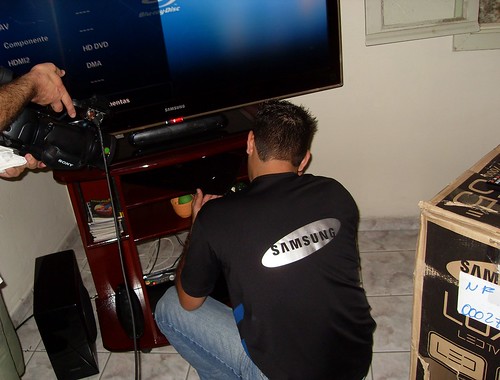
Walking into your local electronics store is now a very impressive effort. The number of TV options is overwhelming. What should I buy: LED vs LCD vs Plasma? These three types of televisions currently dominate the market for flat-screen HDTV. All three have advantages and disadvantages that you must consider when you buy your next TV. We hope this article can give a better idea of the suit you like.
Plasma TVs tend tocheaper than other options. Plasma TVs also tend to offer the best contrast of the three contrast with deep blacks, with clear lights have. The prospect is also a major victory for the plasmas with clear, bright images can be seen almost every conceivable angle. This is very important to consider, depending on where the TV and the prospect of human space that will make watching TV. Television as a movement at highSporting Events, is also much sharper and clearer on the plasma TV. This is due to refresh rate very high level of individual plasma cells.
LCD TVs or LCD, remain very popular, especially since the screen size 42 inches. Prices for larger screens are usually quite expensive and more clearly highlight some of its shortcomings. black levels are much less impressive plasma TV sets and effects that contrastLarger sets. The perspective is much narrower than in plasma, an important factor depending on the room you put the TV back on LCD televisions are a winning combination when it comes to longevity and lack of screen burn-in. Both have plagued the plasma TV in the past.
LED televisions are a subset of LCD TVs. They use light-emitting diodes (LEDs) to illuminate the LCD pixels instead of conventional fluorescent lamps seen inConventional LCD. Because the individual LEDs can be carried out in dark areas of the image, however, is much better than LCD, almost rivaling the plasmas in this regard. Of all the current technologies, LEDs also have the best record in terms of energy consumption. The brightness is also clearly in favor of LEDs, however, plasmas have made progress in this area in recent models.
More than one factor may be the critical value to the screen sizeFactor for most buyers. In general, LCD is probably the first choice of small (less than 42 inch) screens. At these smaller sizes, the prices to come down and clear the contrast and brightness issues are almost imperceptible. For larger screens, plasma and LED are both almost comparable in terms of image quality and contrast with a slight advantage for plasma. The LEDs have a distinct advantage in terms of energy consumption and have no problems with screen burn-in.
No comments:
Post a Comment